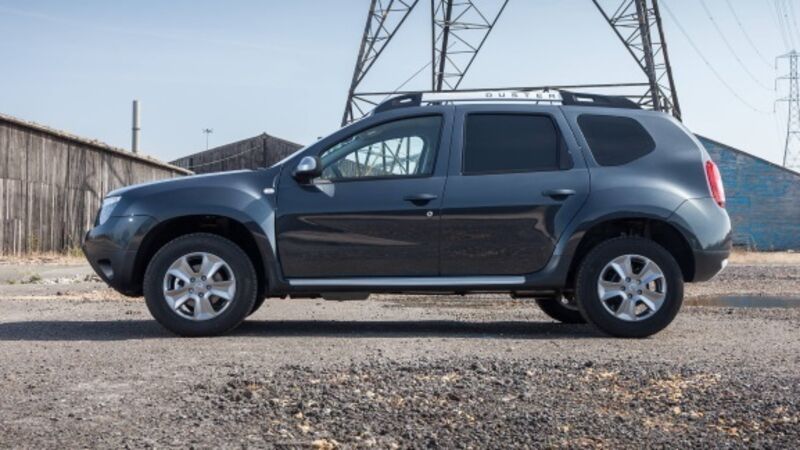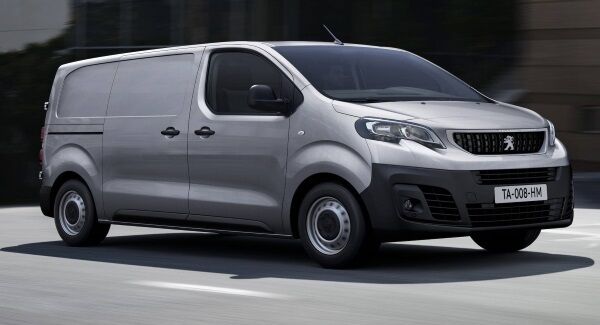In the light commercial vehicles market six brands responsible for 77% of sales

When three brands hold more than half of the market share of light commercial vehicles, it makes it tough for the other makers. Also, when the top six brands are responsible for some 77% of sales, everybody else is being seriously squeezed.
Then, there’s the slippage in registrations by around 11% in the year to date compared to the same period last year. It’s the first drop for a number of years when the industry seemed to be catching up after the very fallow years of recession. It’s a worry, not just for van dealerships, but for the economy, generally, if it reflects a slippage in business confidence.
There’s another element, related to Brexit. With the drop in the value of sterling, the viability of importing used vehicles from the UK has become an issue again, and there’s evidence that this is working on the vans side of things as well.
Anyhow, in numbers and market share terms of the new vehicle business here, Ford is as usual way ahead of the field, shifting some 2,057 units so far in the year, holding an almost 23% market share.
Volkswagen is again next on the podium, with 1,708 units and a share of nearly 19%. In its regular third place, since 2011, is Renault with 1,082 units and almost 12% of the market.
Toyota comes next, but with a twist, because a big chunk of its 869 LCVs is represented by the commercial version of the Land Cruiser, while true-blue vans companies Peugeot (640) and Citroen (551) are the others in the top six. That leaves around 15 other brands scrambling for the rest of the business, though maybe six of these are seriously in vans, the others in low- volume converted SUVs.

Those companies which are the biggest tend to take a very professional direction in their sales methodology, with dedicated dealerships in LCVs, trained specialists in sales and service, and the provision of the kind of backup that a fleet of vehicles working all day every day requires.
It can come down to the size of the dealer network then, and how it is spread around the country. Which is probably why those big sellers at the top are where they are.
Even with the slippage, it’s likely that around 38,000 new LCVs will be rolled off dealer lots this year. It’s nothing like the number of new cars,
probably 140,000 in 2017, but it is a serious and very competitive business just the same.
The top selling models in the year to date are the Ford Transit, Volkswagen Caddy, Ford Transit Connect, Toyota Landcruiser and Peugeot Partner.
However, in the overall marketplace, there’s a significant diversity in how each brand is doing, and where its particular strengths are.
Citroen’s best seller is the Berlingo small van by a long shot, while it does well with its new Dispatch medium van — and will build on that — and its large Relay van tips along for the brand, but doesn’t break records.
Dacia has one LCV, the Duster small SUV conversion, and it’s making a tidy impact, in part because of the value and also because there’s no real competition.

Fiat has a full range of vans, but for some reason doesn’t do as well in Ireland as across Europe. The runout of its Scudo medium van and the arrival of the Talento replacement has probably had an impact. Best seller now is the Ducato large van, followed by the Doblo small van. A new Fullback pickup has yet to make an impression.
Ford is the Irish vanman’s superhero, on top of everything with its Transit range, that includes the Custom, doing very well with its Transit Connect small van, and its Kuga SUV commercial and Ranger pickup, giving their part of the market socks. Nice small earners include the car- derived vans of Focus and Fiesta.
Hyundai’s LCV space is mainly taken by the Tucson commercial SUV, not in very big numbers, because there’s more profit in its passenger version stampede for the last year or more. The Santa Fe large SUV commercial and the i30 CDV are marginal.
Isuzu isn’t as big as it was with its D-MAX pickup in a horrendously competitive arena. Its N series light trucks shares about half the available business with Mitusbishi’s Canter.
Iveco brought back the Daily large van to Ireland after some years’ absence. The model is struggling to make an impression.
Kia isn’t into LCVs, but there are regular, if small, sales of conversions of its Sportage and Sorento SUVs.
Land Rover would traditionally have been big in commercial versions of its Discovery SUV, but the new generation is selling only in passenger car format. It also misses its Defender, always a tidy breadwinner.
LDV is another returned brand to this part of the world, now owned by Chinese company SAIC. Its V80 medium van has been selling in enough numbers to be visible.
Mercedes-Benz always does solid business, with its large van Sprinter a consistent favourite with a loyal clientele. The new generation Vito is also building nicely this year.
Mitsubishi’s main CV interest is in commercial versions of the Pajero and Outlander SUVs, as well as the solidly popular L200 Pickup. Its Canter shares the available light truck business with Isuzu’s N Series.
Nissan has been awaiting its new medium NV300 van, which is beginning to forge up the figures again. The brand also does nicely with its NV400 large van, but the NV200 small van isn’t achieving its potential. The Navara Pickup is doing well, while commercial versions of the Qashqai and X-Trail are keeping the brand in that market space.
Opel’s big player is the always popular Vivaro medium van, and the Movano large van has a steady stream of buyers. The excellent Combo small van could do with some market push.

Peugeot is another king in the small van business with its Partner, while the new generation Expert is steadily gathering appreciation in dealerships. The Boxer large van is one of the many in the deep shadow of Ford’s presence in the segment, but is a very worthwhile vehicle.
Renault is the main competitor to Ford in the large van business, and its Master is a champion for the French brand. The Trafic medium van is also top of its game and the Kangoo small van is respectably in the top five of its segment. The commercial version of the Kadjar SUV is not yet on sale, but imminent.
SEAT is only present in the CDV segment with its Ibiza, and then in a small way, but let’s keep an eye out for a commercial variant of its Ateca compact SUV in the future.
Skoda’s Yeti commercial SUV is a small player, but when the new Kodiaq large SUV comes along, there may eventually be a commercial version.
SSangYong offers a commercial version of its compact Korando SUV, which is neatly executed, and there’s recently a 2-seat commercial version of the large Rexton SUV which has a lot of working space.
Toyota’s big game in LCV is the commercial version of the Land Cruiser, always top of its space. The Hilux Pickup is a big favourite, and the Auris CDV is popular. The Proace medium van hasn’t come near its competition.
Volkswagen’s hero van is the Caddy, top of its segment, second-biggest selling van overall, and largely responsible for VW’s overall market share. Its Transporter medium van is always a solid seller, and the Golf CDV is way ahead of any competition. The Crafter large van is down the line, only because there’s a brand new one imminent and they sold every copy of the old one. The Touareg commercial SUV and the Amarok Pickup have a steady fanbase.





